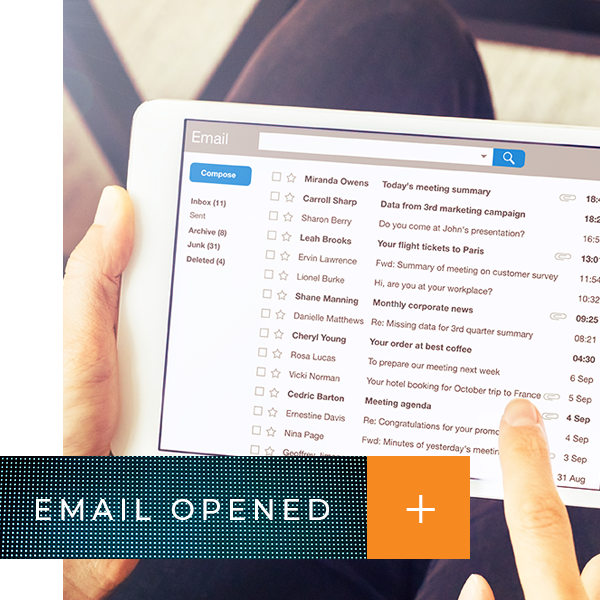“I can’t believe you aren’t creating video; it is 2019?!?!?”
Sound familiar? The cry of Chicken Little telling you the sky is falling if you don’t start making video. Here is the thing, Chicken Little isn’t lying the sky IS falling.

It is easy to dismiss the move to video in the digital ecosystem, but the data says otherwise. Mobile video consumption increases annually by 100% (HubSpot) YouTube is the second most popular site behind Google with a staggering 1 billion hours of videos consumed per day. Viewers retain MORE of your message (95%) when it is given to them in video than when it is in text form, just the word video increases email open rates when it is in the subject line and Facebook predicts by 2021, less than two years from today, the newsfeed will be filled with only video.
However, statistics are just part of this equation. Humans are visual creatures and content that stimulates the user in multiple facets can be a powerful tool in your media mix. So, if you are ready to jump into the world of video here are a few things to consider, the first of which is why?
Why are you making this piece of content? Who is it for? What it is intended to do? I talk to a lot of people who are making video so that it will go “viral” or be “sharable” when the more nuanced understanding of that content should be to create a video that is worthy of being shared instead of the goal being sharable. The difference is that the video was created with the end user in mind, not the goal of views.
This is where storytelling comes in, at the root of ALL great video content is a story. If you don’t have this, you have a commercial, which there is a place for, but that is not the type of video consumers are scrambling to share with friends. If you are looking to create a community around content, it has to have a story.
Recently Apple released a 3-minute story that illustrates this. The purpose was to show how their products seamlessly integrate with one another making your work easier. But even that sentence is so boring you might have jumped to another piece of content. So a commercial with that at its backbone would not connect to any customer Apple wants to speak to. Instead, what if I said the video is about a band of rag-tag employees who are given the opportunity of a lifetime, to pitch their idea to the head of their organization. This pitch will, if it goes well – will change their lives, and Pizza. Now, you’re interested. Now we can make the products accomplices to the story we are telling. A story that anyone who works in an office environment can relate to:
A story at its simplest form is a beginning, a middle, and end, there are 4-part versions of a story, the Shakespearian 5-part story, there has even been a resurgence of the choose-your-own-adventure story with Netflix’s Bandersnatch, and You vs. Wild.
In the Apple video we are working with a 3-part story; There is the inciting incident (part one), the accident, the deadline of 48 hours (which is called the rising action, part two), and then the conclusion as our heroes ascend the elevator to change pizza and their lives forever (part three.) In that 3-minute story Apple shows 13 different products that help pull the story together and act like the cobbler’s elves making sure the shoes get done on time – or in this case the pizza box. It is a brilliant way to use a story to spotlight products without being pushy.
This is why story is so powerful and when you combine it with the visual of video you create a sublime customer experience that they want to share (increasing the reach and value of your product spotlights).
You have a “why” and you have created a story for your video, now where does it go? In another blog entry, we walk through a more detailed explanation but for now understand we are NOT using that video asset one time. In fact, unless we are talking about Instagram Stories or Snapchat, we are not creating single serving content.
If we create a 3-minute video what else have we created? Can we pull out still images to capture the essence of the video to share in Instagram as a tease? What is the 1-minute version that can go on Instagram and Facebook. Are there 15 second versions we could use for Instagram stories and Snapchat? Can we write a blog about the video to create a longer piece for our website? Finally, can we transcribe the audio from the video to use in a shorter podcast?
Video Tips:
 FACEBOOK
FACEBOOK
- 85% is viewed with the volume off, so assume they are not listening and use the Facebook tool to create closed-captions
- Upload directly to Facebook – DO NOT USE A YouTube link as those two companies hate each other
- Use a custom thumbnail that brings the viewer into the video.
- Create a feature video that spotlights your company and what it is that makes you unique
- When you have more video, create playlists so people can watch your videos by category
 INSTAGRAM
INSTAGRAM
- They are watching video with the sound on, so use great writing and music to drive home the story
- Keep the message simple, you only have 60 seconds to tell a story so keep it focused
- Instagram is a visual medium, so keep the text to a minimum.
 INSTAGRAM STORIES & SNAPCHAT
INSTAGRAM STORIES & SNAPCHAT
- You are shooting vertically, so use up and down as a canvas to tell a different story
- Keep it real, this is the part of your brand where it can let its hair down, show us something we don’t see elsewhere
- Embrace the clock – the content is going to expire which is an opportunity to create some great ephemeral stories
 YOUTUBE
YOUTUBE
- Share consistently, the best way to entice subscribers is to create a steady flow of content on the channel
- Use a custom thumbnail that brings the viewer into the video and grabs their attention
- Optimize your video so it ranks. YouTube is the second largest search engine behind Google itself – use that to your advantage
From a single video you could now have 8 pieces of content – we shift our thinking to ensure that we are not making content that cannot be repurposed cross-channel. This creates momentum around your content so that your story is meeting your customer where they are.
“YOUR story meets YOUR customer where THEY are.”
Now that we understand how to leverage that content, let’s quickly talk about the hierarchy of video production. Everyone who is reading this can create not only video, but high quality video with the device in their pocket . And that is only one layer of the video hierarchy. Up from that you have what we might call the “about us” video. This is shot by a professional with a DSLR camera, lights and looks more “video shoot” than what you are doing with a phone. There is the TV ad which can be created by your local TV station or that same team doing your “about us” video, but this is in a different format specific for the “second screen” and works brilliantly when paired with a campaign leveraging social media channels. From there we have long-form videos that are used as short films about products or services that look like the Apple video, using a full crew, a script, and more closely resembling a ‘Hollywood’ production. Finally, there would be an actual ‘Hollywood’ movie – think the original Transformers movie by Michael Bay which had over 60 brands represented in that movie, with Chevy cars and trucks making up the bulk of the product placement leading many to call it a “sci-fi commercial.”
2019 will be the year that brands who don’t embrace video will feel disconnected digitally from the communities that connect with their brands and while video is vital for your marketing, it is not the only thing you need. As a brand, you need a healthy omnichannel mix of mediums and physical spaces to connect with customers where they are. Too many marketers fall in love with the “shiny” thing or the thing that everyone is talking about and fail to consider the entire campaign. Understanding the customer experience, how your customer consumes your content and your brand, and then using data to create more velocity around that experience is the key to growth this year and beyond.
INDUSTRY INSIGHTS
Blog Posts
Trust Is the New Rate: Why Brand Loyalty Wins Across Generations
Content & Creative
Brand trust is the new battleground. Boomers value history. Gen Z demands ethics. Loyalty comes from lived values, not just clever slogans.
The Platform Doesn’t Matter. Trust Does.
Content & Creative
Modern marketing isn’t just about making noise—it’s about earning attention. As audiences scatter across platforms, some local media brands are thriving by staying rooted in…
Google is Still King, But TikTok’s Coming for the Crown
Content & Creative
Google is still king for financial questions, but Gen Z prefers TikTok. Smart banks create content that works across search, social, and AI tools.
WE'RE HERE TO HELP
Grow Your Business
The MLive Media Group of today drives Michigan businesses to greater success. Contact us with any opportunities for us to help you.







 Ad Choices
Ad Choices
